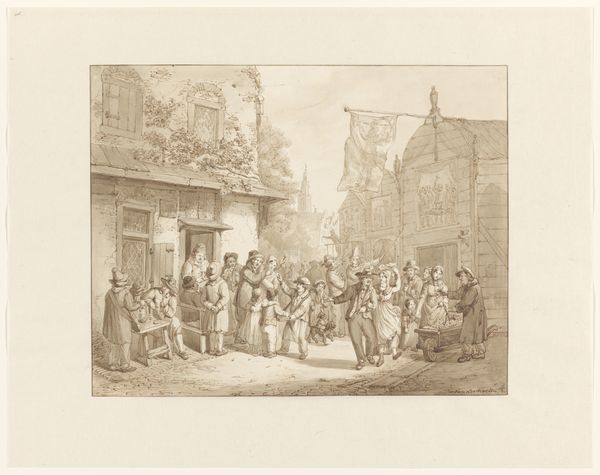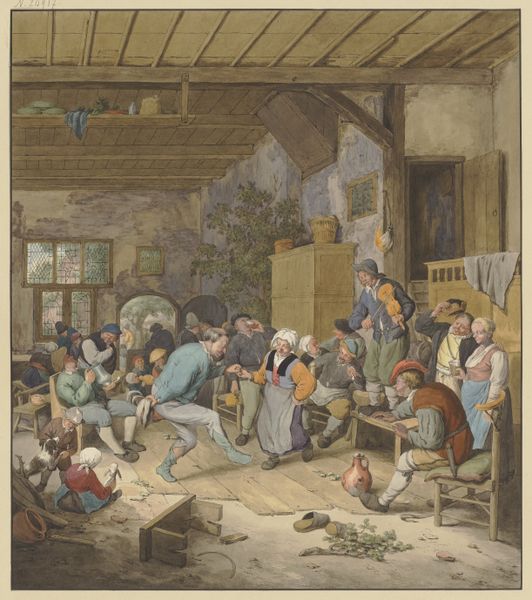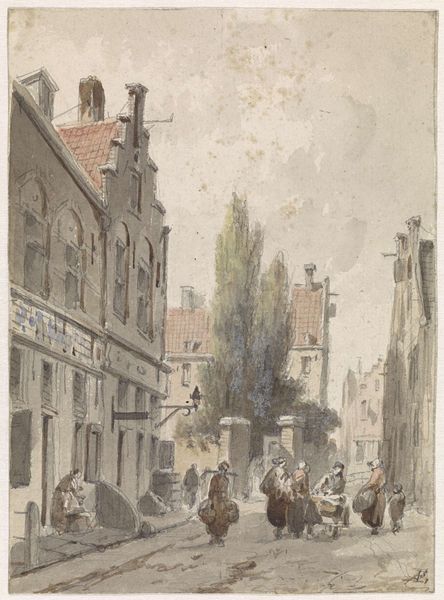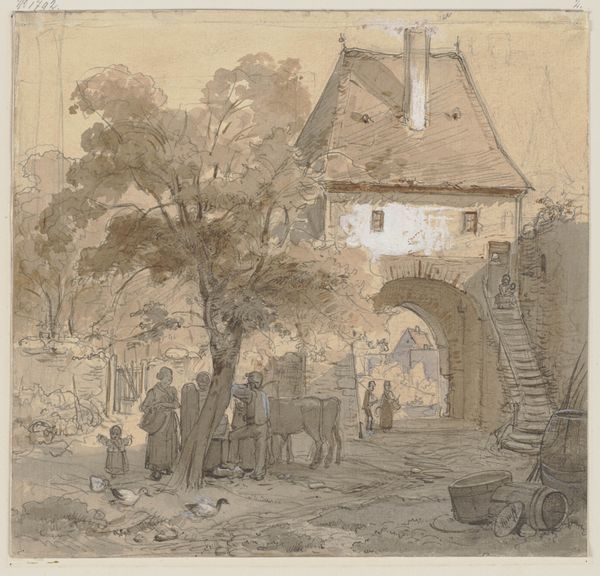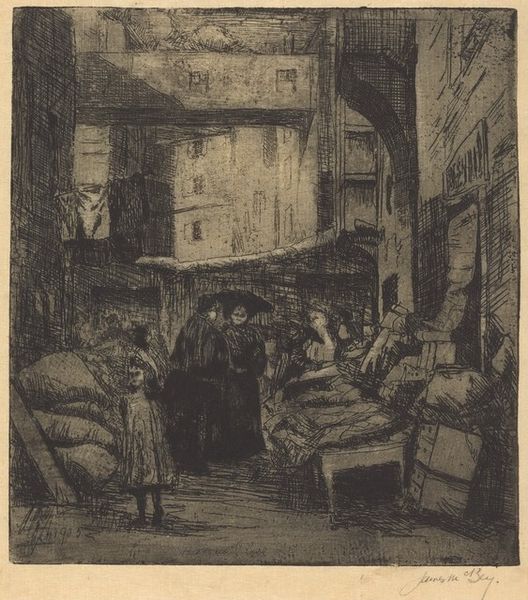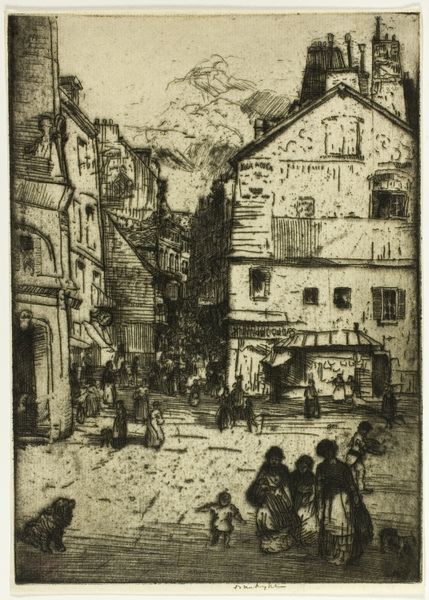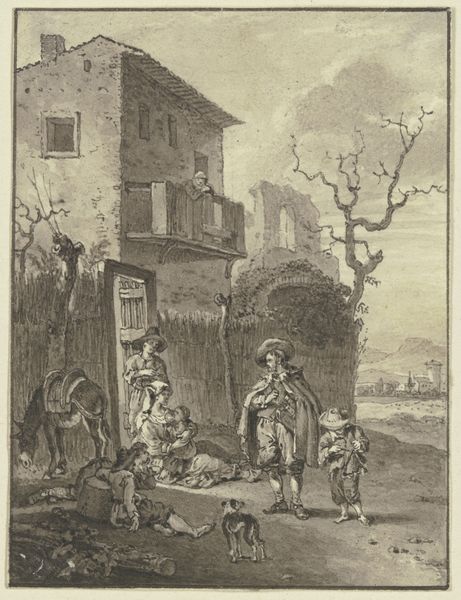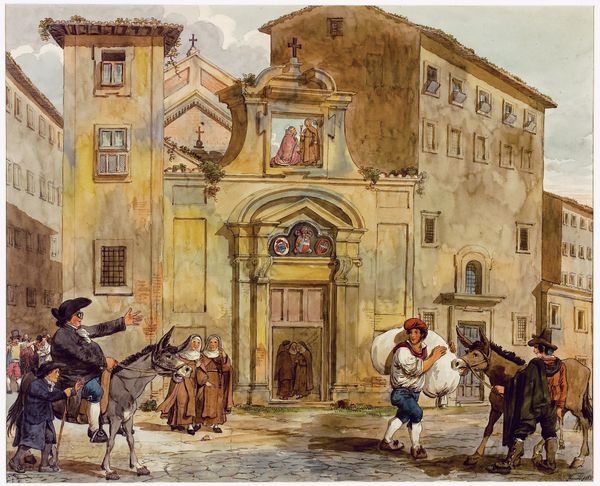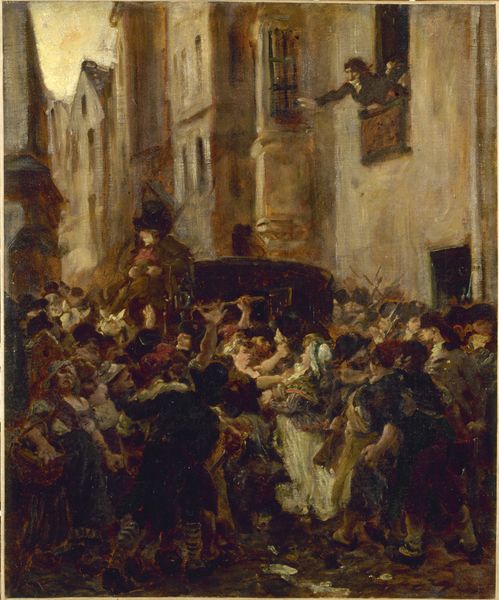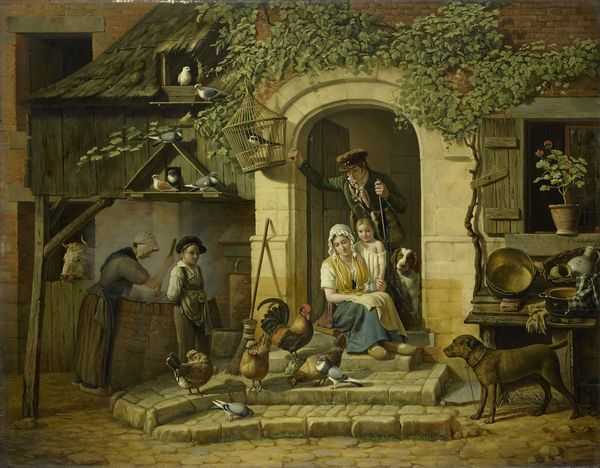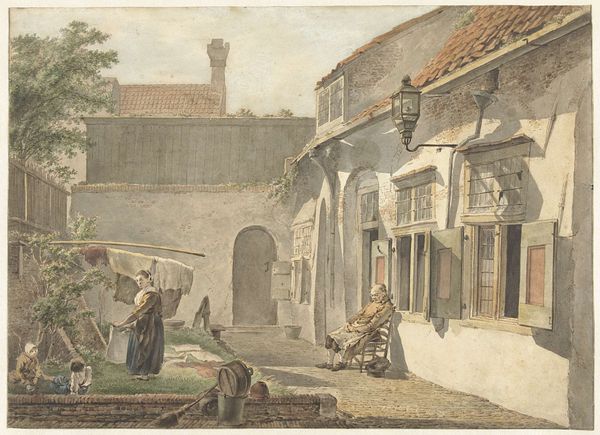
plein-air, watercolor
#
impressionism
#
plein-air
#
watercolor
#
cityscape
#
genre-painting
#
watercolor
Dimensions: height 375 mm, width 285 mm
Copyright: Rijks Museum: Open Domain
Curator: We're looking at "Boerenpoort in de Joodse buurt in Den Haag," created by Willem Bernardus IJzerdraat sometime after 1860. It's currently housed here at the Rijksmuseum. Painted with watercolor in what seems to be plein-air style. Editor: It’s such a busy little scene. The light, muted colors give it a calm veneer, but look at the number of figures clustered under that archway! It makes me feel like an uninvited voyeur into a bustling community hub. Curator: The image captures a vibrant segment of The Hague, focusing on daily life in what was then its Jewish quarter. Note the distinctive dress of some of the figures, their clothing indicating their Jewish identity within a specific cultural and geographic context. Editor: The architectural space of the gateway, and the close gathering of the people feels both welcoming and constricted. Did this image play a role in either idealizing or perhaps stereotyping this community during its time? Curator: Given IJzerdraat’s background, primarily as a landscape painter, I see him attempting to document and celebrate a specific locale and moment. These genre paintings often reflected the broader socio-economic currents within Dutch society. Editor: I am intrigued by the choice to depict the community specifically under this arched gateway. Is the artist implying a sense of enclosure, a boundary, or perhaps the protection it afforded in a world that wasn’t always kind? Curator: It's probable that it reflects both. Certainly, the location offers protection. The use of watercolor adds to the transient feeling and suggests fleeting everyday moments in this location, allowing viewers to engage with history and the rich complexities of daily life from that time. Editor: It's a small peek into their lives that offers a reflection on what we now consider identity, migration, and societal inclusion in relation to marginalized communities. Curator: Exactly. We see an historical record, yet it also raises ongoing concerns in modern society regarding tolerance, diversity, and representation. Editor: Thank you, that added depth. It made me rethink its relationship with ongoing dialogs regarding identity and community in a rapidly changing world.
Comments
No comments
Be the first to comment and join the conversation on the ultimate creative platform.

